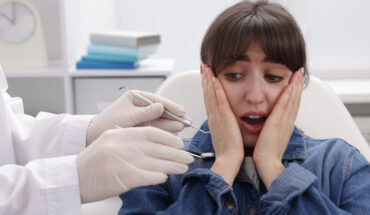
A confident smile often starts with bright, white teeth. As more people seek ways to enhance their appearance, teeth whitening has grown in popularity worldwide. But while the desire for a whiter smile is understandable, many individuals overlook the deeper connection between teeth whitening and oral health. This ultimate guide explores how to safely whiten your teeth, maintain good oral hygiene, and make informed decisions—especially when considering the cost of teeth whitening.
What Is Teeth Whitening?
Teeth whitening is a cosmetic dental procedure designed to lighten the color of your teeth and remove stains or discoloration. This can be done professionally by a dentist or with over-the-counter (OTC) products such as whitening strips, gels, or trays. There are also natural whitening methods, though their effectiveness and safety can vary.
Common Causes of Tooth Discoloration
Before diving into whitening treatments, it’s important to understand what causes teeth to discolor in the first place:
- Diet: Foods and drinks like coffee, tea, red wine, and berries can stain enamel.
- Smoking: Nicotine and tar in tobacco leave brownish or yellowish stains.
- Poor oral hygiene: Inadequate brushing and flossing can lead to plaque buildup and staining.
- Aging: As we age, the enamel on our teeth wears thin, revealing the yellowish dentin underneath.
- Medications: Certain antibiotics and antihistamines may darken teeth, especially in children.\
Types of Teeth Whitening Treatments
When it comes to whitening your teeth, there’s no one-size-fits-all solution. Here’s a breakdown of common options:
1. In-Office Whitening
Performed by a dentist, this method uses high-concentration peroxide gels combined with LED light or laser technology. It provides fast, dramatic results—often within an hour.
Pros: Immediate results, dentist supervision
Cons: Higher cost, potential for temporary sensitivity
2. Take-Home Whitening Kits
Custom trays provided by your dentist for at-home use. These kits use a lower concentration of bleaching agents over several days or weeks.
Pros: Professional-grade results, more affordable than in-office
Cons: Takes longer, must follow instructions carefully
3. Over-the-Counter (OTC) Products
Available at drugstores, these include whitening strips, toothpaste, and LED kits.
Pros: Convenient, low cost
Cons: Inconsistent results, may not be suitable for all
The Cost of Teeth Whitening
Understanding the cost of teeth whitening helps you weigh options based on your budget and desired results:
- In-office professional whitening: Typically ranges from \$300 to \$800 per session.
- Take-home kits from a dentist: Cost between \$200 and \$400.
- OTC products: Prices vary widely, from \$20 to \$100, depending on the brand and type.
While these cheaper alternatives may be convenient, they often deliver less consistent results. Understanding the full range of teeth whitening price options can help you make a choice that balances effectiveness, safety, and affordability.
The Link Between Whitening and Oral Health
Teeth whitening may improve your appearance, but it’s essential to consider your oral health before starting any treatment. Here are some key things to know:
- Healthy Gums and Teeth Are a Must: Whitening products are most effective and safest when your teeth and gums are in good condition. Gum disease, cavities, or exposed tooth roots should be treated first.
- Sensitivity Is Common: Some people experience sensitivity to hot or cold after whitening. This is usually temporary but can be uncomfortable if you have pre-existing dental issues.
- Enamel Safety: Excessive or incorrect whitening can weaken enamel and increase the risk of decay. Always follow professional advice and avoid overusing OTC products.
- Not All Discoloration Responds to Whitening: Internal staining or discoloration due to injury or medications may require alternative cosmetic solutions like veneers or bonding.
Tips for Maintaining Your White Smile
Whitening your teeth is just the beginning. Here’s how to keep them bright and healthy long after treatment:
- Brush twice a day with fluoride toothpaste.
- Floss daily to remove plaque between teeth.
- Rinse after meals, especially after consuming stain-causing foods or drinks.
- Avoid tobacco and limit coffee, wine, and dark-colored foods.
- Use a straw for beverages that can stain.
- Schedule regular dental cleanings to remove surface stains and keep your mouth healthy.
Final Thoughts: Whitening with Wisdom
Teeth whitening can be a powerful confidence booster, but it must be approached wisely. Start with a dental consultation to ensure your mouth is healthy enough for whitening. Understand your options—professional versus over-the-counter—and be aware of how each method can affect your oral health.
The ultimate guide to teeth whitening isn’t just about choosing the right product—it’s about protecting your teeth while achieving the results you want. Whether you’re preparing for a special occasion or simply want to refresh your smile, always prioritize safety, effectiveness, and long-term oral health.




